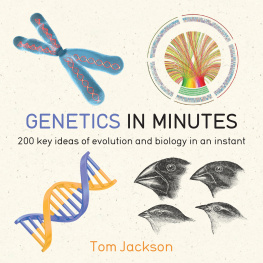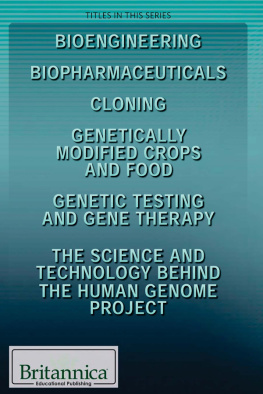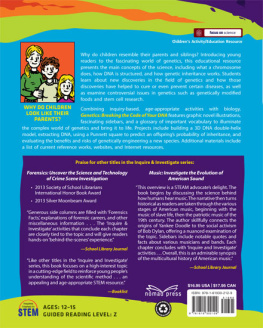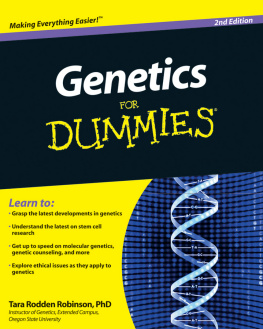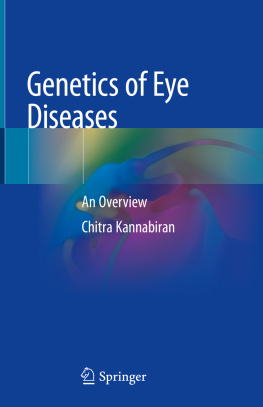

CONTENTS
I n its simplest terms, genetics is the study of inheritance. However, looking a little deeper, there is nothing simple about it. Genetics tells us how a body can grow from a single cell; it shows how life on Earth has changed in a myriad ways over billions of years; and it forms a central plank in the fight against disease. Whats more, it also has the potential to create new technology that will transform society, ensuring health for all and perhaps even allowing us to control the future development of our species and reshape the living world.
As a science, genetics is relatively new: its foundations date from the 1850s, but those many different strands were not drawn into a single field until the early 20th century. It was slow going at first, and not until the 1950s did the great mysteries of genetics begin to give up their meanings. First was the discovery of the DNA double helix, and after that the so-called Central Dogma, which shows how an inanimate chemical code can result in a living body. Progress accelerated rapidly as we unlocked more of the secrets of the gene, but even today, despite huge advances, there are many riddles within our DNA that we are still to solve. We may have learned how to decipher the genetic code, but the work of translating what it all means is still proceeding.
Genetics draws from many fields, such as chemistry, biology, agriculture, engineering, even information theory and statistics. For many, the expectation is that genetics can tell us exactly who we are, whats in the genes. Long before the science of genetics existed, our ancestors would have understood that a child was a unique blend of characteristics inherited from its parents. However, the extent to which the nature of our genetic code rules our behaviours and personalities is proving the most difficult puzzle to solve. Perhaps the latest interests of genetics, such as stem cell research, epigenetics and artificial biology, will provide those missing pieces certainly these intriguing areas of research suggest that genetics will continue to have a huge influence on medicine and our understanding of what it means to be human in the 21st century and beyond.
W hat is life? In a nutshell, scientists would define it as a self-replicating process that requires at least one thermodynamic cycle. To put that another way, something that is alive is able to make a copy of itself, and it does this by harnessing a source of energy, using it to transform chemical resources in some way. The supply of energy must be continuous; if the energy source were to become unavailable, or the life form became unable to tap it, then the result would be death. That is something else unique that life can do: it can die.
According to this definition, the simplest life form is a strand of nucleic acid, something like RNA (see ). This chemical is able to use its own molecule as a template for a copy of itself. However, such a life is incredibly precarious, and over billions of years of evolution, a multitude of life forms have developed abilities that ensure survival. These abilities are set out in genes, and they govern the success or failure of a life. To understand life, one must begin with genetics.

Types of organism
T he number of different types, or species, of organism on Earth is estimated to be anywhere between 3 and 30 million, with most biologists erring towards about 9 million.
The simplest and oldest life forms are the bacteria, which have a body made from a single tiny prokaryotic cell (see ) is the one used by multicellular organisms such as plants, animals and fungi.
Every species of organism has a unique way of life, but members of any biological group share more characteristics with each other than with the members of other groups. However, all life forms share a set of abilities: they sense the surroundings, excrete, reproduce, grow, respire and require nutrition.

Metabolism
T he broad term metabolism encapsulates the link between chemical activity and life the myriad chemical processes that are occurring inside every organism are described as its metabolism. In very general terms, these include the way the organism handles its energy supply, and how it uses this to grow and repair its body, making use of simple chemical building blocks.
Metabolic processes fall into two general types: anabolism and catabolism. The former involve building larger, more complex and more ordered structures out of smaller units. (That is why a sports cheat might use an anabolic steroid, a chemical that builds muscle.) Catabolism, in contrast, involves splitting large structures into smaller ones (this includes processing unwanted waste materials to generate energy). Anabolic and catabolic processes are constantly working together to release manageable packets of energy and then put them to work in keeping the organism alive.

Feeding
E very living thing must feed, or putting it more precisely, they must access a source of nutrition. Plants get this in the form of sugars from photosynthesis and mineral nutrients absorbed from their surroundings (soil is a good place to start). Animals and fungi get their nutrition from the bodies of other organisms. Some single-celled organisms can get nutrition using both techniques!
Nutrition has two main purposes. First, it is a source of chemical energy that can be extracted and put to work in the body (the best examples of this are glucose and other sugars). The second purpose is as a stockpile of the raw ingredients required to build a body. The requirements of different organisms vary wildly: plants are able to build everything they need from water, carbon dioxide, and a menu of minerals such as nitrates and phosphates, while animals need more complex nutrition, such as fats, starches, proteins and a range of crucial helper chemicals, known collectively as vitamins.

Respiration
W hen most people hear the term respiration, they tend to assume it relates to breathing. But while this is indeed the words common medical context, biology gives it a wider meaning: in fact, all organisms respire, whether or not they breathe in and out in the way that vertebrate animals do.
Biologically, respiration is defined as the metabolic process that releases energy from sugar or other chemical fuels. Typically, this involves the fuel molecules being oxidized exactly the same chemical reaction involved when materials combust in air. The respiration of glucose, one of the most common sugars, for example, can be written in the form of a chemical equation as shown opposite. This demonstrates that glucose reacts with oxygen to produce carbon dioxide and water, plus some energy. If raw glucose is burnt in air, the reaction produces flames and heat, but within a living cell it can be heavily regulated, allowing small packets of energy to be released in several steps.

